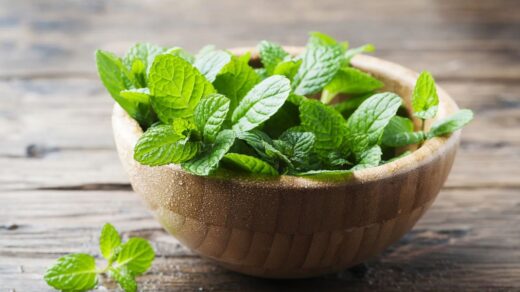Top 10 Indian Medicinal Plants And Their Uses
These days Ayurvedic medicine is gaining much popularity throughout the world. It is an alternative health system medicinal plants that are used as herbal remedies.

This remedy is one among many, which helps to correct a systemic imbalance. But before applying them; it is important to know the types of medicinal plants and their uses.
Knowing the right method of preparation of the herbs is also significant for the Ayurvedic healing process. Ayurvedic medicine or herbal plants which are used for treating are based on the five method to control the overall system.
They are used in the form of hot infusion, cold infusion, powder, juice and decoction. It doesn’t matter what method is used, but it is necessary that herbs should always be fresh.
Different Ways Used To Administer Herbs
In Ayurveda infusion is the most common way to administer herbs. Second is cold infusions; it is prepared by soaking the herbs in water overnight.
The third is the hot infusion; it is prepared by adding the herbs to hot water, remember not boiling water; it is like preparing a healthy tea. Below are some medicinal plants and their uses that you can apply for various ailments.
1. Rosemary for Coughing
This herb has a long history of medicinal uses; it was commonly found in the gardens of Ancient Egypt, Rome, and Greece. It has also been popularly used for coughing; the healing properties called “eucalyptol” in this herb.
In the study, it has been proven that these properties can help to loosen chest congestion, making phlegm easier to discharge. In addition to that, rosemary is also rich in anti-inflammatory tannins that can relieve a sore throat.
Pairs well with:
- White beans
- Chicken
- Brie cheese
- Roasted meats
- Poultry
- Potatoes
- Polenta
- Apples
2. Oregano for Menstrual Cramps
Oregano is an herb that was used in herbal medicine as long ago as the Ancient Greeks. Oreganos have been used for many ailments that include, for gastrointestinal (GI) disorders, for treating respiratory tract disorders, for urinary tract disorders, including menstrual cramps.
For menstrual cramps, you can drink ginger tea mixed with 2 drops of oregano oil in it, during painful or scanty periods.
In addition to that, you can also add a few drops of the oil to chamomile tea to increase its efficacy. It can also be used as a massage oil to get relief from menstrual cramps.
Using is simple rub a mixture of 2-3 drops of oregano oil mixed with 1 teaspoon of coconut oil on the lower abdomen. It works as a wonderful herb due to its properties like thymol and carvacrol, which relax uterine muscles and prevent painful cramps.
Pairs well with:
- Mushrooms
- Tomato sauce
- Olives
- Summer squash
- Fish
3. Dill for Upset GI Tract
Dill is also known as dill weed, this is a green herb with curly thread-like leaves that grow in clusters. It has been used in ayurvedic medicines since ancient times.
It is a popular herb vastly used as a spice besides essential oil. In Ayurveda dill seeds or leaves are used for carminative, stomachic and diuretic.
Dill has been beneficial as it has is a good source of manganese, calcium, and iron. It also has antioxidant and antiviral properties that kill harmful intestinal bacteria such as E. coli and give the entire body incredible health benefits.
Pairs well with:
- Eggs
- Chicken
- Cucumbers
- Mixed greens
- Cheddar cheese
- Cream cheese
- Clear soups
- Carrots
- Beets
4. Cayenne for Congested Nose
In Ayurveda, Cayenne is known as pepper, it is the spice that is used to counter many ailments. It is helpful in cramps, gas, for relieving the upset stomach, sore throat, indigestion, headaches, etc.
Besides this it is a popular remedy for congestion caused due to cold or sinus; it also helps in clearing up the sinus’s problems. The active element called “cayenne” in pepper gives the pepper its fiery taste.
The cayenne works as a pain inhibitor, and it helps to reduce nasal blockage. One of the best ways to use cayenne pepper is in the form of nasal spray, which is commonly available over the counter at pharmacies.
Pairs well with:
- Roasted poultry
- Root vegetables
- Chocolate
- Rice
- Shrimp
- Leafy greens
- Popcorn
- Eggs
- Beans
- Grilled-cheese sandwiches
- Creamy soups
5. Coriander for Always Tired
Feeling always tired, thyroid disorder is the main reason that can make you feel constantly tired. The thyroid gland is considered as a “master gland,” it is one secretes hormones that, in one way or another, impact almost every bodily function.
Thyroid gland functions in regulating body temperature, production of protein, heart rate and also improve your metabolic rate and energy levels. Coriander can be the best remedy as it has a wonderful source of dietary fiber, iron, magnesium as well as manganese.
Besides this, it is also rich in Vitamin C, Vitamin K, and protein and small amounts of phosphorous, calcium, thiamin, potassium, carotene, and niacin.
Pairs well with:
- Seafood
- Avocados
- Black beans
- Corn
- Steak
6. Mint For Stomach Aches
Peppermint is an herb that can be very helpful in indigestion. It can aid digestion due to its carminative property of expelling gas. It expels gas from the stomach or intestines and relieves intestinal gas, distension and stomachache pain.
Massaging a few drops of Peppermint oil on your abdomen can help to relieve pain. Peppermint is known to every effective due to its menthol properties in it
It is a natural plant compound that relaxes pain-inducing intestinal spasms. According to German researchers, it can reduce belly discomfort by 40 percent.
Pairs well with:
- Tomatoes
- Eggplant
- Green peas
- Lamb
- Couscous melon
- Hot or cold beverages
7. Curry powder for Joint Pain
To deal with joint pain naturally, curry powder can be and the best choice. Curry powder is made up of multiple herbs and spices such as turmeric, ground coriander, chili powder, ground ginger, ground cumin and pepper all these mixed properties bring calm, medium or hot flavors.
Turmeric has a property called “Curcumin” a substance that can help fight pain, inflammation and rheumatoid arthritis.
The element of Turmeric called Curcumin has anti-inflammatory qualities that help to decrease deterioration, joint inflammation and other discomfort associated with arthritis.
Pairs well with:
- Mangoes
- Lentils
- Cauliflower
- Rice
- Spinach
8. Parsley for Bloated Stomach
Parsley has a long history of its usage it is since the days of Hippocrates in about the 4th century BC. Parsley is the most commonly used herb in cooking along with a diuretic property that help to prevent and overcome gas and bloating.
It is also used as general tonics for digestive disorders, poison antidotes and to relieve kidney and bladder stones. Beside this parsley has been used in ayurveda for gastrointestinal disorders since ages.
Parsley has properties called apiol and myristicin, natural diuretic that helps to relieve bloat-inducing water retention; it prevents salts from being reabsorbed into bodily tissues.
Pairs well with:
- Onions
- Grains
- Pasta
- Parmesan cheese
- Tomatoes
- Seafood
- Salads
9. Basil for Feeling Down & Depression
If you are feeling down or have depression, Holy basil can be used as a treatment aid for depression. In the Hindu culture, holy basil is called “Tulsi” which means “the incomparable one.”
According to Ayurveda Tulsi is bitter in taste, with pungent, light, dry, sharp properties with hot potency. Tulsi calms Vata and Kapha dosha and increases Pitta.
Tulsi has a property called Eugenol and rosmarinic acid that increase the brain’s production of dopamine and serotonin and could help to relief in feeling down or depression.
Regular use of tulsi can reduce depression and its related conditions such as bulimia nervosa and anxiety disorders.
Pairs well with:
- Olives strawberries
- Tomatoes
- Fresh mozzarella
- Melon
- Pasta
- Pizza
- Feta cheese
- White fish
10. Ginger For Nausea
Ginger is a culinary spice known worldwide for its cuisine as well as for its medicinal benefits. Ayurveda text describes it uses to treat nausea, stomach aches, Motion sickness, diarrhea, etc.
According to a study at Brigham Young University in Provo, Utah, Ginger’s gingerol and shogaol properties can calm digestive-tract spasms and can reduce nausea better than morning-sickness drugs.
Pairs well with:
- Tea
- Citrus fruits
- Pork
- Sweet potatoes
- Miso soup
- Coconut
- Relishes
- Onions
- Rice
- Pears
There are many natural medicines that are effective, but it is must be used with proper expert advice to ensure safety and potency.


























vary good Article,i like it
Very nice blog as it has widened my area of knowledge about the powerful herbs and their effectiveness against treating various diseases. In addition to this, there are also many herbs in Ayurveda that act like wonders in boosting immunity and in reducing and also curing various types of illness such as Ashwagandha, Shatavari, amla etc.
Vary nice, I read your good article on Indian madicinal plant and thair uses, every body read about it,
Thanks
Thank you for your wonderful post about medicinal uses of plants, it was interesting to read.
Continue posting more such post regarding Ayurvedic benefits.